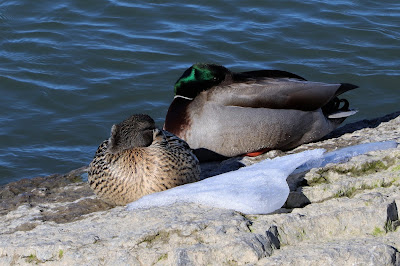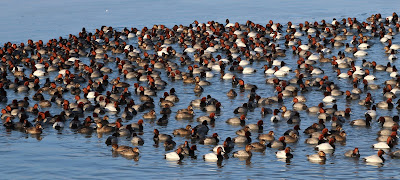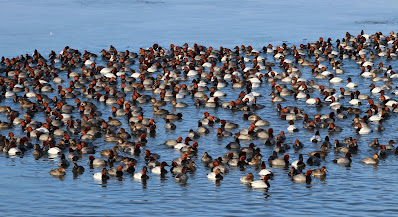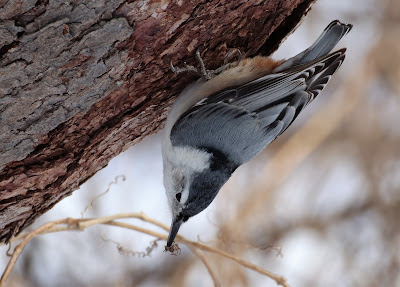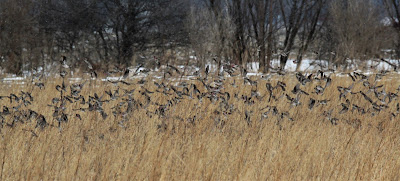Mostly River Stuff:
The U.S. Coast Guard headed into Lake Huron on Wednesday. Both Canada and the U.S. continue to monitor ice conditions on Lake Huron and the St. Clair River.
Long-tailed Ducks are amazing divers. They are able to dive as deep as 200 feet to forage for food. (Cornell Lab, All About Birds)
A dozen Long-tailed Ducks were hanging around in the river,
just south of the Bridges. These two appear to be doing Duck Yoga!
A Common Golden-eye catching up with the rest of his flock.
A Mallard Drake and Hen resting at the edge of the busy river.
Bottoms Up! Mute Swan searching for food: All Mute Swans in North America descended from swans imported from Europe from the mid 1800's through early 1900's. Mute swans have enormous appetites. A Maryland study found they ate up to 8 pounds a day of submerged aquatic vegetation, removing food and habitat for other species faster than the grasses could recover. (Cornell Lab, All About Birds)




